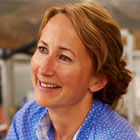Halogens, stratospheric ozone and the Montreal Protocol
-
Case study
- Environmental Sustainability and Resilience
York research has informed the Montreal Protocol on Substances that Deplete the Ozone Layer - an influential international treaty designed to protect the ozone layer.

The issue
Ozone in the upper atmosphere (stratosphere) protects humans and crops from harmful ultraviolet radiation.
The 1987 Montreal Protocol on Substances that Deplete the Ozone Layer is designed to prevent the release of substances that may harm the ozone layer; the protocol and its subsequent amendments have resulted in many ozone-depleting substances being phased-out of production. It has prevented millions of cases of skin cancer deaths and cataracts, and has also substantially reduced emissions of greenhouse gases.
The Montreal Protocol requires continual development and ratification to ensure it is working successfully. Every four years, the Scientific Assessment Panel of the United Nations Montreal Protocol is charged with updating the state-of-scientific-understanding of the depletion of stratospheric ozone, via the United Nations Environment Programme and World Meteorological Organisation.
The research
Professor Lucy Carpenter has made a substantial contribution to the body of knowledge concerning chemicals with links to stratospheric ozone depletion.
Her research on bromoform (CHBr3) and dibromomethane (CH2Br2) has shown they are the principal brominated VSL (very short lived) bromine source gases to the stratosphere and are predominantly of natural marine origin, with ocean phytoplankton and macroalgae being the dominant sources.
She has provided new information on the abundance of VSL source gases from the marine boundary layer to the tropical tropopause layer, resulting in an improved estimate of bromine source gas injection (SGI) to the stratosphere.
Her research into iodine-containing compounds uncovered mechanisms of ocean release that have resulted in increased iodine emissions over the 20th century, and may indicate a higher iodine content of the stratosphere than was previously thought.
Professor Carpenter's research with Dr Stefan Reimann of EMPA identified marked increases in surface concentrations and likely stratospheric source gas injection of CH2Cl2, highlighting that VSL chlorinated compounds were becoming more relevant for stratospheric O3.
Further research showed that if emission rates continued to grow as was seen during the first decade of this century, CH2Cl2 could deplete as much column ozone between 2020 and 2060 as that by the controlled ozone-depleting substances emitted during that period.
The outcome
Professor Carpenter's substantial body of work has been repeatedly cited and used in successive ozone assessments, influencing assessment conclusions and subsequent global policy and action.
VSL halocarbons are not restricted by the Montreal Protocol, but following Professor Carpenter's research are now evaluated in order to reconcile observed stratospheric measurements of inorganic or 'active' bromine with the reported anthropogenic bromine emission sources.
Basic research from York into natural sources of VSL has provided a framework for international model studies that have explored whether future increases in VSL halocarbons as a result of climate change could counteract the effect of halogen reductions under the Montreal Protocol.
Recent measurements made by Carpenter and co-workers contributed to a reduction in the assessed uncertainty range of total VSL bromine in the stratosphere and were central to providing greater confidence in the ability of policymakers and governments to predict changes in stratospheric O3, assess whether natural variability in VSL impacts the evolution of stratospheric O3, and the success of the Montreal Protocol.
Professor Carpenter is one of few scientists worldwide to have been a lead author for more than one of the World Meteorological Organisation's ozone assessments. For the 2018 assessment Professor Carpenter co-led the international policy conclusions chapter, while in 2014 she co-led the ozone-depleting substances chapter.

Lucy Carpenter FRSC, FRS
Professor Carpenter conducts world-leading research on the emissions, chemistry and impact of processes occurring in the atmosphere above the world’s oceans. Her work combines field observations, laboratory studies and theoretical modelling to answer important questions about global climate change.
